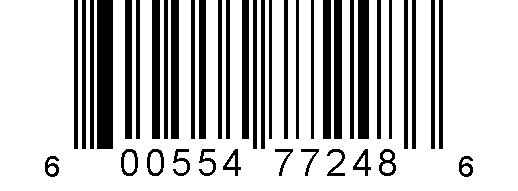More Recorder Music with Maurice Steger, and
Arcangelo Corelli: Violin Sonatas op.5
Media Review / Listening Diary 2014-02-07
2014-02-07 — Original posting (on Blogger)
2014-11-10 — Re-posting as is (WordPress)
2015-05-22 — Added reference to Dorothee Oberlinger’s live performance of Corelli’s op.5/10
2016-07-18 — Brushed up for better readability
Table of Contents
- More Recorder Music with Maurice Steger
- CD “La Castella”
- What’s on the CD
- 1. Marco Uccellini (1603 – 1680): Aria sopra ” La Bergamasca ” ( 3’51” )
- 2. Giovanni Antonio Pandolfi Mealli (1630 – 1669): Sonata IV “La Castella” ( 6’02” )
- 3. Francesco Mancini (1672 – 1737): Sonata IV in A minor ( 9’05”)
- 4. Giovanni Antonio Pandolfi Mealli (1630 – 1669): Sonata I “La Bernabea” ( 7’29” )
- 5. Arcangelo Corelli (1653 – 1713): Sonata in F major, op.5/10, arr. G major ( 9’41” )
- 6. Dario Castello (1590 – 1656): Sonata seconda ( 5’24” )
- 7. Benedetto Marcello (1686 – 1739): Sonata II in D minor ( 9’17” )
- 8. Marco Uccellini (1603 – 1680): Sonata quarta ( 5’16” )
- 9. Antonio Vivaldi (1678 – 1741): Sonata in F major, RV 52 ( 5’45” )
- Recommendation
- Arcangelo Corelli (1653 – 1713): Violin Sonatas op.5
- Telemann: Solos & Trios
More Recorder Music with Maurice Steger
This posting covers two additional CDs featuring the Swiss recorder artist Maurice Steger (for the first two CDs see my “Listening Diary 2014-01-31“). The third recording (1998) is devoted to Italian composers exclusively (rather than covering a wider scope of “Italian style music”, as the first recording from 1994):
CD “La Castella”
La Castella — Italian Baroque Virtuoso Instrumental Music
Maurice Steger, recorder
Naoki Kitaya, harpsichord, virginal, organ; Martin Zeller, cello; Yasunori Imamura, theorbo; Martina Schobersberger, organ, virginal
claves records CD 50-9809 (CD, stereo); ℗ / © 1998

For this CD, Maurice Steger has four accompanists (see the CD description above): Naoki Kitaya, Martin Zeller, Yasunori Imamura, and Martina Schobersberger.
Maurice Steger’s Recorders
- The following recorders are used (tuned to a’ = 415 Hz, unless noted otherwise):
- Descant recorder in c” (a’ = 466 Hz), by Hans Nieuwland, NL, Ganassi type
- Descant recorder in c” (a’ = 415 Hz), by Andreas Schwob, CH, Ganassi type
- Soprano recorder in c”, by Andreas Schwob, CH, based on early baroque models
- Descant recorder in g’, by Andreas Schwob, CH, Ganassi type
- Alto recorder in f’, by Frederick Morgan, Daylesford, Australia, after Peter I. Bressan
- Voice flute in d’, by Frederick Morgan, Daylesford, Australia, after Peter I. Bressan and Thomas Stanesby
Other Musicians and Their Instruments
The other instruments (keyboard instruments with Kirnberger III or similar tunings) include
- Italian harpsichord by Alberto Vanini (Italy, 1995), after Carlo Grimaldi, 1697
- Chest organ (8′, 4′, 2′, 1 1/3″) by Fama & Raadgever (NL, 1991), based on baroque models
- Italian virginal by Alan Gotto (England, 1995), after Queen Elizabeth’s instrument at the Victoria & Albert Museum, London.
Remark: I suspect that the model for this instrument is referred to as “The Queen Elizabeth Virginal, Giovanni Baffo, 1594, Venice, Italy. Museum no. 19-1887″ — a Muselar-type instrument, where the strings are plucked near the center of the string. - Theorbo (tuned in D minor) by Mathias Durvie (France, 1980), after Matteo Sellas (Italy, 1640)
- Theorbo (tuned in A) by Junji Nishimura (Japan, 1993), after baroque models
- Cello by Paolo Castello (Genova, ca. 1780)
What’s on the CD
And here’s the program of the CD, along with the instruments played, as well as my remarks / notes (the instruments listed in parentheses indicate discrepancies in the liner notes):
1. Marco Uccellini (1603 – 1680): Aria sopra “La Bergamasca” (3’51”)
Instruments: descant recorder (Ganassi) in c” (a’ = 466 Hz), virginal, organ, theorbo in A (lute?), cello
This is a piece from “Il terzo libro delle sonate e arie, Venezia 1642“.
Comment: An exuberant, short Passacaglia on a popular folk song — certainly a hit in its days. The Passacaglia bass is very simple: i – iv – v – i – i – IV – V – i — merely two full cadences, yet the piece isn’t boring at all.
2. Giovanni Antonio Pandolfi Mealli (1630 – 1669): Sonata IV “La Castella” (6’02”)
Instruments: descant recorder (Ganassi) in g’, harpsichord, organ, theorbo in A, cello
This is a composition originally intended for the violin, from “Sonate a Violino solo, per Chiesa e Camera, opera terza, Inspruch 1660” (apparently, the name of this sonata is not referring to Dario Castello (see below), but to Antonio Castelli, organist in Innsbruck).
Comment:A piece with a slow start, then accelerating up to a climax with rich, virtuosic ornamentation. This is followed by a Passacaglia upon the simple, falling four-tone line IV – III – II – I, providing the basis for very rich, virtuosic, accelerating solo part, ending in a freely preluding, again virtuosic “Coda” — very nice, love it!
3. Francesco Mancini (1672 – 1737): Sonata IV in A minor (9’05”)
Instruments: alto recorder in f’, harpsichord, cello
This is a sonata with the four movements Spiritoso / Largo — Allegro — Largo — Allegro spiccato; also this composition (as the one above) is from “Sonate a Violino solo, per Chiesa e Camera, opera quarta, Inspruch 1660“
Comment: Virtuosic, playful in the articulation; I like the sound of Steger’s alto recorder: it retains / exposes the “wooden” character of the instrument, with a somewhat “grainy” tone; the solo part in the last movement (Allegro spiccato) is astounding!
4. Giovanni Antonio Pandolfi Mealli (1630 – 1669): Sonata I “La Bernabea” (7’29”)
Instruments: soprano recorder (early baroque) in c”, virginal, organ, theorbo in A
As the sonata above, this is a composition originally intended for the violin, also from “Sonate a Violino solo, per Chiesa e Camera, opera quarta, Inspruch 1660“
Comment: As the liner notes point out, this piece anticipates the stylus phantasticus, later adopted by composers such as Dieterich Buxtehude and others. It mostly feels like a free fantasy, not following rigid form principles; another virtuoso piece, with the theorbo leading the bass, adding somewhat of a percussive element in many passages.
5. Arcangelo Corelli (1653 – 1713): Sonata in F major, op.5/10, arr. G major (9’41”)
Instruments: voice flute in d’, virginal, organ
I have this composition also in two other interpretations — for remarks and a comparisonsee below.
6. Dario Castello (1590 – 1656): Sonata seconda (5’24”)
Instruments: descant recorder (Ganassi) in c” (a’ = 415 Hz), virginal
This is from “Sonate Concertate, In stil Moderno Per Sonar nel Organo Overo Clavicembalo con diversi Instrumenti, a Sopran solo, Libro secondo, Venezia 1644“
Comment: Clearly the oldest piece in this recording — another virtuoso piece, suitably played on a Ganassi-type (pre-baroque) recorder. The accompaniment features a muselar-type virginal with its archaic, full sound (clearly different from a harpsichord, see above for details), obviously with mean-tone tuning. Excellent!
7. Benedetto Marcello (1686 – 1739): Sonata II in D minor (9’17”)
Instruments: alto recorder in f’, organ, theorbo in d, cello
This is a short sonata with the movements Adagio — Allegro — Adagio — Allegro, published under “Suonate a Flauto solo, con il Basso Continuo per Violoncello ò Cembalo, opera seconda, Venezia 1712“
Comment: A nice baroque sonata from one of Bach’s contemporaries who lived in Venice — a man with an interesting biography!
8. Marco Uccellini (1603 – 1680): Sonata quarta (5’16”)
Instruments: soprano recorder (early baroque) in c”, harpsichord, organ, theorbo in A, cello
This piece is from “Partitura delle Sonate over Canzoni, opera quinta, Venezia 1649“
Comment: A piece totally different from the first one above — but still extremely entertaining, one of the real highlights of this CD! A widely varied piece, interchanging between slow, almost lyrical (if not melancholic) sections and fast, virtuosic segments, where Uccellini (translated: little birds) appears to let his music explode into bursts of joyful, wild bird songs, up to an exuberant, virtuosic ending. Clearly, music that is typical of Uccellini. It is played here on a soprano recorder. I have heard Uccellini played on a flageolet, which seems an even better fit to the character of the sonata (though I don’t know whether the limited tonal range of a flageolet is suited for this sonata).
9. Antonio Vivaldi (1678 – 1741): Sonata in F major, RV 52 (5’45”)
Instruments: alto recorder in f’, harpsichord, virginal, organ, theorbo in d (guitar?), cello
A sonata with the three movements Siciliana — Allemande — Allegro: Aria da giga
Comment: A “typical Vivaldi sonata” — reminds me of the violin concerti and sonatas that I played in my violin lessons. In the Siciliana (AABB), Maurice Steger adds nice ornaments in the repeats. The Allemande is a joyful, light & fast movement, again with added, playful (and virtuosic) ornaments in the repeat sections. The final Aria di Giga is just a short closing movement.
Recommendation
I can only recommend this recording — to me, this is the best of Maurice Steger’s recordings that I have heard so far: virtuosic, playful, and really entertaining!
Arcangelo Corelli (1653 – 1713): Violin Sonatas op.5
The CDs
Trio Veracini
Corelli:12 Sonate a violino e violone o cimbalo op.5
Trio Veracini: John Holloway, David Watkin, Lars Ulrik Mortensen
Novalis 150 128-2 (2 CDs, stereo); ℗ / © 1996

Stefano Montanari, Ottavio Dantone, Accademia Bizantina
Corelli: Violin Sonatas op.5
Stefano Montanari, Ottavio Dantone, Accademia Bizantina
Arts Authentic 47724-8 (2 x SACD, stereo); ℗ / © 2005

Arcangelo Corelli’s Sonatas, op.5
Arcangelo Corelli‘s sonata collection “12 sonate a violino e violone o cimbalo”, op.5 features two parts of six sonatas each:
6 sonate da chiesa,
Each of these features five movements. Two published versions exist for the violin voice. One versions features the “backbone” only, i.e., the basic melody. Then there’s the second version, where primarily the slow movements is heavy ornamented, presumably by the composer himself. There are also alternate sources for ornamented versions. These indicate how popular these sonatas must have been in baroque times. For all we know, most baroque composers (including Vivaldi and Handel) assumed that the performing artist would be ornament slow movements. Skilled artists may even have improvised the ornaments. Bach may be somewhat of an exception, as he tended to write down many ornaments explicitly.
6 sonate da camera
Then, there are 6 sonate da camera, most featuring dance or dance-like movements (e.g., Allemande, Courante, Sarabanda, Gavotta, and Giga). These were typically also featured in baroque suites. Note that none of these sonatas follows the full suite scheme Allemande — Courante — Sarabande — Gigue.
Sonata op.5/12, “La Follia”
Sonata #12 is the well-known Follia, allegedly the most famous composition by Corelli, a theme with a rich set of 22 virtuosic variations. Unfortunately, no version with ornaments by Corelli exists for the second part of op.5, though there are scores with ornaments by other artists / composers, at least for some of these compositions. In any case, if the sonate da chiesa were so heavily ornamented, I don’t see why at least slow movements in the sonate da camera shouldn’t be treated the same way.
Sonata op.5/10
Arcangelo Corelli’s Sonata in F major, op.5/10 features five dance movements with explicit tempo annotation; all movements have the form AABB, i.e., two parts with repeat signs (these are observed in all interpretations in this comparison):
- Preludio: Adagio
- Allemanda: Allegro
- Sarabanda: Largo
- Gavotta: Allegro
- Giga: Allegro
The sonata was originally intended for the violin (published with the second part of Corelli’s op.5). For the flute or recorder, this particular sonata was transposed from F major to G major. It was published this way as part of “Six Solos for a Flute and a Bass, The second part of his Fifth Opera, The whole exactely Transpos’d and made fitt for a flute and a Bass with the aprobation of severall Eminent Masters, London, c. 1701“.
Recordings of op.5/10
Besides Maurice Steger‘s recording on voice flute in d’ (see above) I have two recordings with violin, Corelli’s original instrument designation for this sonata:
Trio Veracini
The first one is a recording from 1996 with the Trio Veracini (John Holloway, violin; David Watkin, cello; Lars Ulrik Mortensen, harpsichord). John Holloway plays a violin by Gagliano (naples) that has been reverted to its original, baroque state. The cello is a replica after Montagnana, played with a baroque bows, of course. Holloway did carefully research the archives; all sonate da chiesa are played with Corelli’s ornaments. For the sonate da camera historic sources were used for ornaments, wherever possible.
Also, Holloway decided to read the title of the collection exactly: sonate a violino e (violone o cimbalo), i.e., the violin is accompanied by either a harpsichord or a violone (the sonatas are annotated accordingly). Here, the instruments are tuned to a’ = 412 Hz, mean tone tuning is used, individually adjusted for each sonata. The sonata op.5/10 is played with a harpsichord (Lars Ulrik Mortensen) as accompaniment only. For the Sarabande, the ornaments published by Walsh (London) are used.
Stefano Montanari, Ottavio Dantone, Accademia Bizantina
A second recording was made in 2002, with Stefano Montanari (violin), with a much richer accompaniment. Ottavio Dantone (harpsichord) directing musicians from the Accademia Bizantina. These include Mauro Valli (violoncello piccolo), Nicola Dal Maso (violone), Tiziano Bagnati (archlute, baroque guitar), and Romano Valentini (organ). It’s obviously a less strictly “original” interpretation. Still, the musicians know how to handle ornaments, tempi, etc.; they are experienced in baroque interpretation. The booklet gives no details on the instruments in this recording.
Maurice Steger
Then, there’s Maurice Steger‘s interpretation on voice flute (d’), with the accompaniment done on an organ and a virginal (Naoki Kitaya, Martina Schobersberger) — for details see above.
Comparison
How do these recordings compare?
John Holloway and Lars Ulrik Mortensen
As pointed out above, John Holloway did carefully check the available sources. His playing is at the forefront of historically informed practice, where, e.g., he uses vibrato sparingly, and only to highlight particular notes. Overall, the interpretation does occasionally sound a bit dry, almost “ex cathedra”. Ornaments are added very sparingly, even in the repeats, almost only adding trills in obvious locations (such as in punctuated notes prior to the end of a phrase), or adding a small cadenza prior to the ending of a movement.
The Sarabanda features the repeats with ornamentation from the Walsh manuscript — for harpsichord alone. I doubt that this was the intent. I think that the “right hand” was meant for the violin, while the harpsichord should rather just play the harmonic foundation. In any case, the notes played are from a historic source.
Limiting the accompaniment to just a harpsichord is probably justified and can hardly be objected to. This recording may be historically very (too?) correct, in comparisons with “richer” (and possibly historically less accurate) recordings, this interpretation will easily fall off as sounding “raw”, if not a bit “crude” to the naïve / less informed listener. Still, it is definitely a very good recording, but a little more ornamentation in the repeats would not have hurt.
Rating: 4.0
Stefano Montanari and Ottavio Dantone with the Accademia Bizantina
Purists (such as John Holloway?) may claim that this performance is a “fantasy product” because of the rich set of ornaments added, particularly (but not only) in the repeat parts. However, Corelli’s own ornamented version of the first six sonatas in op.5 can serve as a clear indication that substantial ornamentation (particularly in the slow movements) was common practice in baroque times. Also, Corelli’s minimalist instrumentation (see John Holloway’s interpretation) can be seen as a minimum requirement, given that adapting baroque music to other instruments, or widening the instrumentation in the basso continuo (as in this recording) was common practice. Also Bach has adopted a large number of works by other composers for his own needs.
So: yes, this interpretation is not exactly what Corelli has written down. Holloway’s interpretation shows what Corelli has composed, while this one gives a good impression on how a possible, practical realization in Corelli’s time may have sounded. As indicated, Montanari adds a rich set of ornaments, in the opening movement not only in repeat sections, but also during the first pass (which is in accordance with Corelli’s own handling of ornaments in the sonate da chiesa). In the other movements, ornaments are added mostly in the repeat parts.
The continuo is much richer than Holloway’s harpsichord-only accompaniment. In the violin voice, the Gavotte may sound a tad slow for an Allegro. However, with all the ornamentation / filling in the continuo, overall, the movement does not feel too slow at all. This is a vivid, rich-sounding, joyful interpretation, likely more appealing to the average listener. The only minor criticism I have is a slight tendency towards bulge notes on the violin.
Rating: 4.6
Maurice Steger, Naoki Kitaya, and Martina Schobersberger
The version for recorder can’t be entirely faithful to Corelli’s original for violin anyway: the tonal range of the recorder requires shifting sections for the G-string up by an octave, sometimes with additional adaptations. Also, playing the resulting tenor flute notation (c’) on a voice flute (d’) results in a transposition of the sonata from F major to G major. The sound of the recorder is very nice, full, yet with “character” and a certain “graininess” — very much what I like! The organ dominates the continuo. Unfortunately, the virginal is somewhat in the background and sounds hardly different from a harpsichord.
But overall, the accompaniment is nicely complementing the sound of the recorder. In the fast movements, Steger’s articulation is very virtuosic, particularly in the ornamented parts. Steger plays the Gavotta as fast as Holloway, but adding a full pass (with yet more ornaments) at the end, making the form AABBAB. This makes sense: otherwise, the movement would be less than half a minute. For reasons outlined above, comparing this to a “strict” interpretation, such as Holloway’s, is pointless. The key point here is that this is a lively, joyful, entertaining and very well-played interpretation, at the level of all the other pieces in this recording.
Rating: 5.0
Recommendation
For an overall comment on Maurice Steger’s recording see above; all three recordings of the Corelli sonata are excellent, though.
Addendum
I just ran into a fascinating live interpretation of Corelli’s Sonata op.5/10, by Dorothee Oberlinger (soprano recorder), Vittorio Ghielmi (viola da gamba), and Luca Pianca (lute):
Telemann: Solos & Trios
Telemann: Solos & Trios
Maurice Steger, recorder
Continuo Consort Naoki Kitaya
claves CD 50-2112 (2 CDs, stereo); ℗ / © 2001

A Telemann CD with Maurice Steger
This last CD by Maurice Steger in my little series, recorded in 2001, is devoted to chamber music by Georg Philip Telemann (1681 – 1767). As in Steger’s second CD, the accompaniment (where applicable) features Naoki Kitaya and members of the Continuo Consort, all using either period instruments or modern replicas. The instruments use Kirnberger III tuning at a’ = 415 Hz, .
Maurice Steger’s Recorders
- This CD only features recorders in f’ (alto) and d’ (tenor, voice flute):
- Alto recorder in f’, by Frederick Morgan, Daylesford, Australia, after Peter I. Bressan
- Alto recorder in f’, by Adrian Brown, NL, after Jacob Denner
- Alto recorder in f’, by Shigeharu Hirao, Japan, after Jacob Denner
- Voice flute in d’, by Frederick Morgan, Daylesford, Australia, after Peter I. Bressan and Thomas Stanesby
- Voice flute in d’, by Adrian Brown, NL, after Jacob Denner
The Musicians and their Instruments
The accompanists and their instruments are
- Naoki Kitaya and Markus Märkl, playing German harpsichords (with 1 and 2 manuals) by Markus Krebs, Switzerland, after Michael Mietke
- Hanna Weinmeister playing the “Bennet” violin by Antonio Stradivarius, Cremona, 1692
- Rainer Zipperling playing a cello by Vincenzo Trusiano Panormo, Palermo, 1786, and a viola da gamba by François Bodart, Belgium, after Guillaume Barbey
- Brian Feehan playing a theorbo by Matthias Durvie, France, after Matteo Sellas
- Käthi Gohl playing a cello by Hendrik Jacobs, Amsterdam, 1693
What’s on the CD
Here’s the program of this CD, along with the respective musicians and their instruments:
1. Sonatina in C minor for recorder and basso continuo (7’30”)
Maurice Steger, alto recorder in f’ (Morgan); Naoki Kitaya, harpsichord
Largo — Allegro — Dolce — Vivace
2. Sonata in C major for recorder and basso continuo (7’05”)
Maurice Steger, alto recorder in f’ (Brown); Rainer Zipperling, cello; Brian Feehan, theorbo; Naoki Kitaya, harpsichord
Adagio – Allegro – Adagio – Allegro — Larghetto — Vivace
3. Fantasia I in A major for solo flute (3’35”)
Maurice Steger, voice flute in d’ (Brown)
Vivace — Allegro
For details & comments see the posting “Telemann: 12 Fantasias for Flute“
4. Trio sonata in A major for recorder, violin and basso continuo (8’48”)
Maurice Steger, alto recorder in f’ (Morgan); Hanna Weinmeister, violin; Naoki Kitaya, harpsichord
Affettuoso — Vivace — Grave — Menuet
5. Trio sonata in B♭ major for recorder, cembalo obbligato and basso continuo (8’25”)
Maurice Steger, alto recorder in f’ (Morgan); Naoki Kitaya, harpsichord; Rainer Zipperling, cello; Markus Märki, harpsichord
Dolce — Vivace — Siciliana — Vivace
6. Trio sonata in F major for recorder, viola da gamba and basso continuo (8’09”)
Maurice Steger, alto recorder in f’ (Morgan) and alto recorder in f’ (Hirao); Rainer Zipperling, viola da gamba; Käthi Gohl, cello; Naoki Kitaya, harpsichord
Vivace — Mesto — Allegro
7. Sonatina in A minor for recorder and basso continuo (7’35”)
Maurice Steger, alto recorder in f’ (Brown); Naoki Kitaya, harpsichord
Andante — Allegro — Andante — Presto
8. Fantasia VIII in E minor for solo flute (5’05”)
Maurice Steger, voice flute in d’ (Morgan)
Largo — Spirituoso — Allegro
For details & comments see the posting “Telemann: 12 Fantasias for Flute“
9. Trio sonata in D minor for recorder, violin and basso continuo (8’41”)
Maurice Steger, alto recorder in f’ (Brown); Hanna Weinmeister, violin; Rainer Zipperling, cello and viola da gamba; Naoki Kitaya, harpsichord
Allegro — Adagio — Allegro — Presto
Comments — Recording
I don’t want to repeat myself too much, so I’ll keep my comments very short. Pretty much all comments on Maurice Steger‘s previous CDs (see above and the Listening Diary 2014-01-31) equally apply this one as well. The playing is excellent, virtuosic, vivid, artful also with the other solo instruments and in the continuo. The sound / recording technique is maybe the best in terms of differentiation, transparency and balance among Steger’s recordings covered so far. In particular, the harpsichord is getting the attention it deserves. Also, the recorder clearly is in the center of this recording, but it is not nearly as dominant as on the other CDs.
The main differences to Steger’s other three recordings primarily is in the restriction to a single composer. This makes the CD somewhat more uniform, musically. Of course, Telemann does offer a wide variety of expressions, from contemplative and lyrical to fast, virtuosic pieces with drive, from solo to harmonically rich, polyphonic music. Also the variety of recorders used is smaller: just alto recorders (in f’) and voice flutes (in d’).
On the other hand, the pieces include solo recorder, sonatas, i.e., recorder and continuo (where the continuo varies from harpsichord alone up to harpsichord, theorbo and cello), up to trio sonatas. In the case of Telemann, the latter means two solo instruments (violin, harpsichord or viola da gamba) plus basso continuo as the third voice.
Accompaniment
The additional soloists in the trio sonatas (Hanna Weinmeister, violin; Naoki Kitaya, harpsichord; Rainer Zipperling, viola da gamba) as well as the continuo players (Brian Feehan, theorbo; Käthi Gohl, cello; Markus Märki, harpsichord) are all excellent and obviously very experienced in historically informed practice in baroque music. They are absolutely on a par with Steger’s level of playing.
Recommendation
Definitely a recommended recording, along with the first one above in this post.
Listening Diary Posts, Overview










